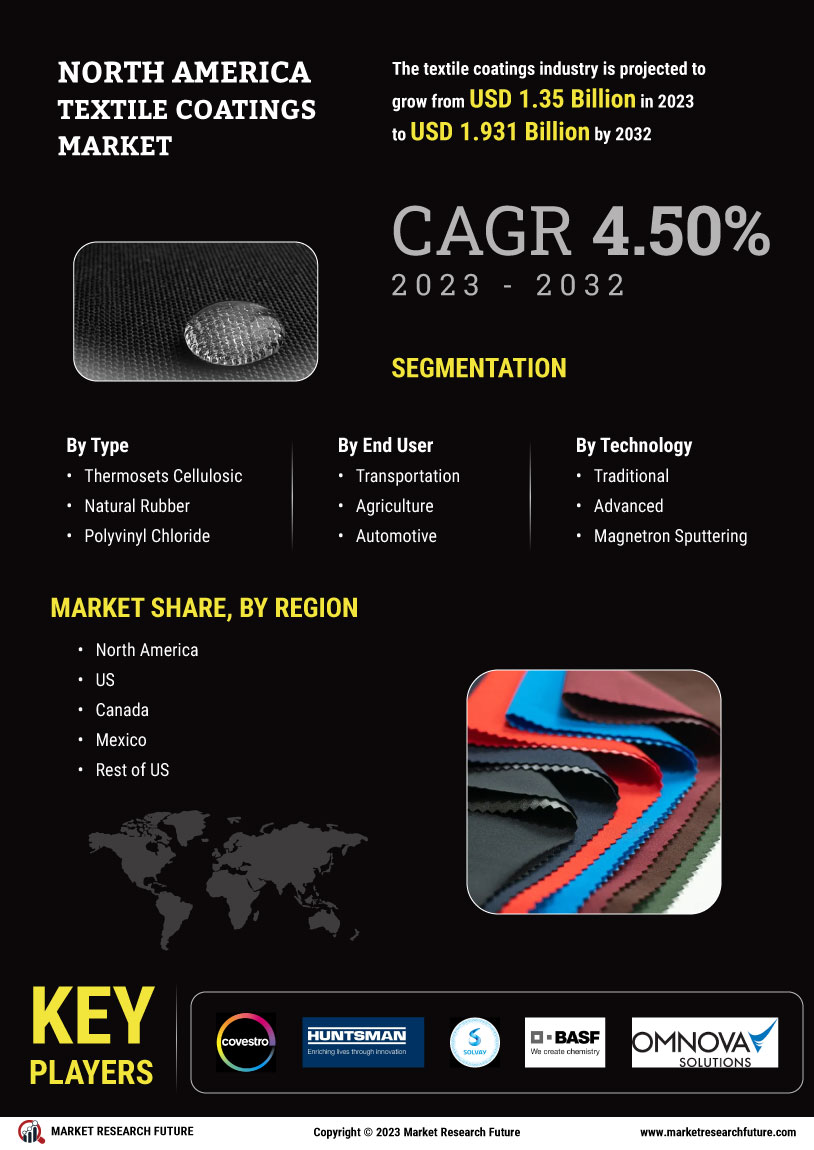Growing Demand for Functional Textiles
The textile coatings market in North America experiences a notable surge in demand for functional textiles, driven by the increasing need for performance-oriented fabrics. Industries such as automotive, healthcare, and sports apparel are seeking textiles that offer enhanced properties like water resistance, UV protection, and antimicrobial features. This trend is reflected in the market data, which indicates that the functional textiles segment is projected to grow at a CAGR of approximately 6.5% from 2025 to 2030. As consumers become more aware of the benefits of coated textiles, manufacturers are compelled to innovate and expand their product offerings, thereby propelling the textile coatings market forward.
Expansion of E-commerce and Online Retail
The textile coatings market in North America is witnessing a transformation due to the rapid expansion of e-commerce and online retail platforms. This shift allows consumers to access a wider variety of coated textiles, including specialty and niche products that may not be available in traditional retail settings. Market data indicates that online sales of textiles are expected to grow by over 20% annually, creating new opportunities for manufacturers to reach diverse customer segments. As online shopping becomes more prevalent, the textile coatings market is likely to benefit from increased visibility and accessibility of products.
Regulatory Compliance and Safety Standards
In North America, the textile coatings market is significantly influenced by stringent regulatory compliance and safety standards. Government agencies enforce regulations concerning the use of hazardous chemicals in textile production, prompting manufacturers to adopt safer alternatives. This shift not only ensures consumer safety but also enhances the market's reputation. The market data suggests that companies investing in eco-friendly and compliant coatings are likely to capture a larger share, as consumers increasingly prefer products that align with safety standards. Consequently, adherence to regulations is becoming a critical driver for growth in the textile coatings market.
Technological Innovations in Coating Processes
Technological innovations in coating processes are playing a pivotal role in shaping the textile coatings market in North America. Advancements in application techniques, such as digital printing and nanotechnology, enable manufacturers to create more efficient and effective coatings. These innovations not only improve the performance of textiles but also reduce waste and production costs. Market data suggests that the adoption of advanced coating technologies could lead to a reduction in production costs by up to 15%, thereby enhancing profitability for manufacturers. As technology continues to evolve, it is likely to drive further growth in the textile coatings market.
Rising Consumer Awareness of Health and Wellness
Consumer awareness regarding health and wellness is increasingly impacting the textile coatings market in North America. There is a growing preference for textiles that promote well-being, such as those with antimicrobial and hypoallergenic properties. This trend is particularly evident in sectors like home textiles and activewear, where consumers prioritize health benefits. Market data shows that the demand for health-oriented coated textiles is projected to rise by approximately 7% annually. As manufacturers respond to this trend by developing innovative coatings that enhance health benefits, the textile coatings market is expected to expand significantly.


















Leave a Comment